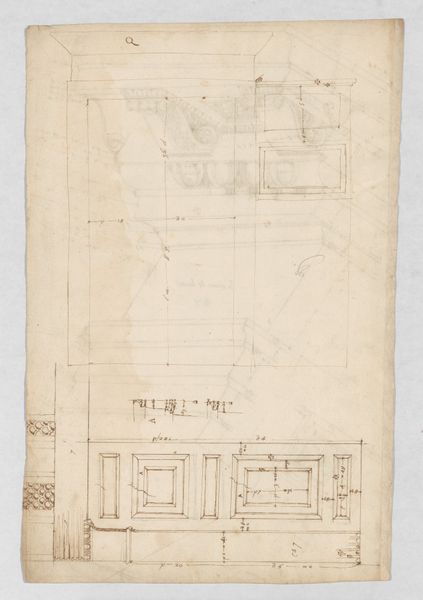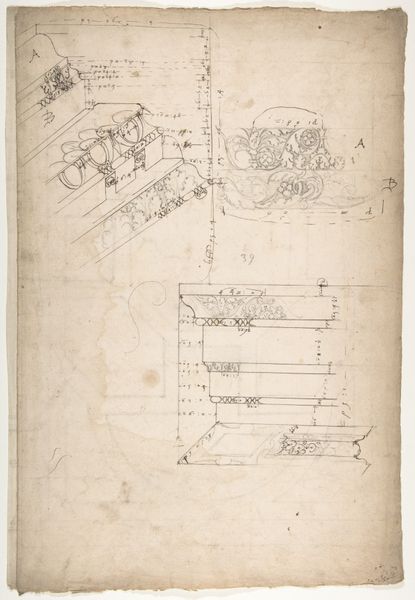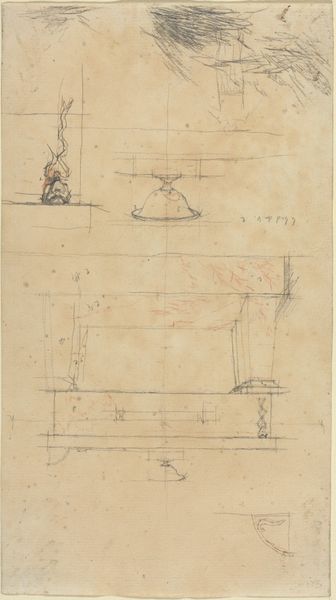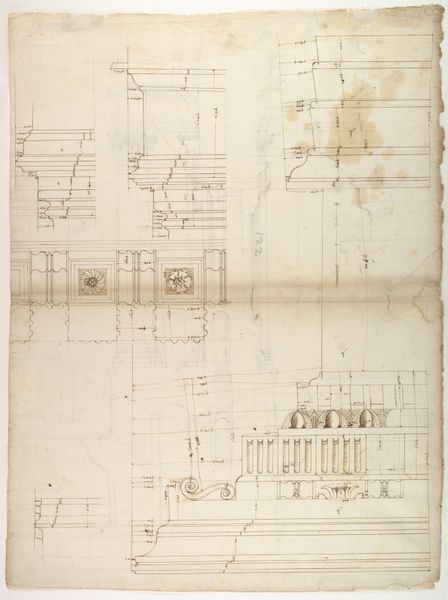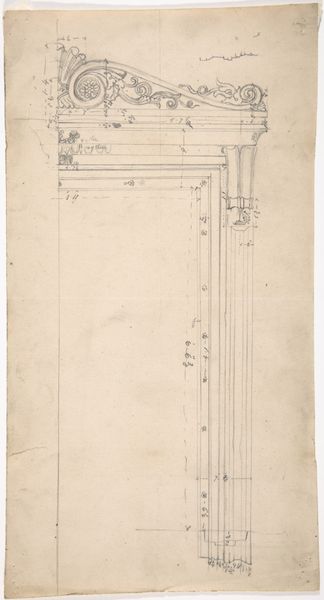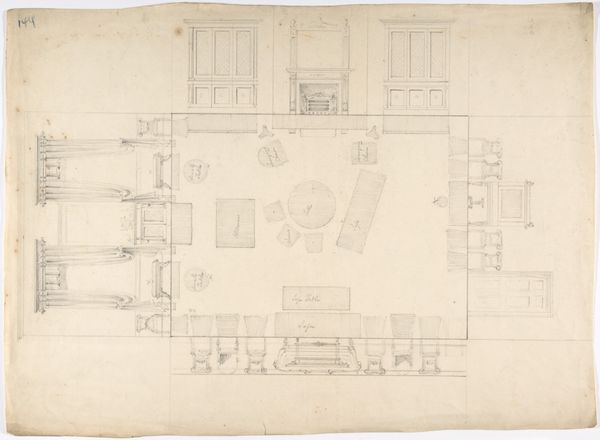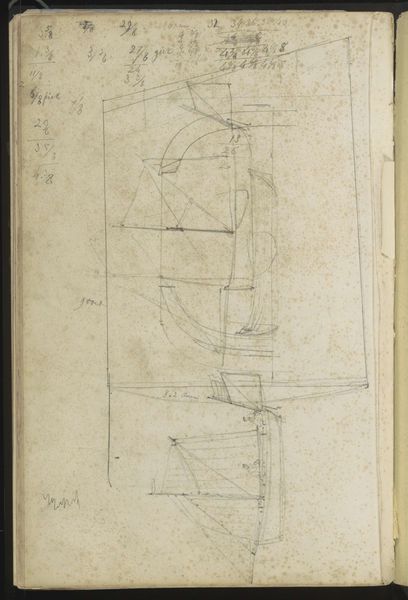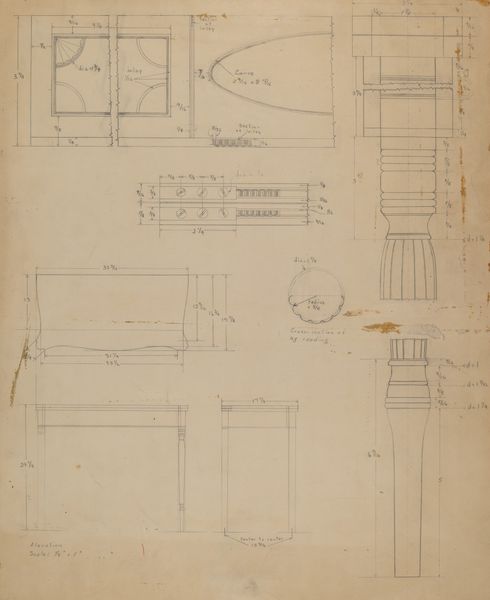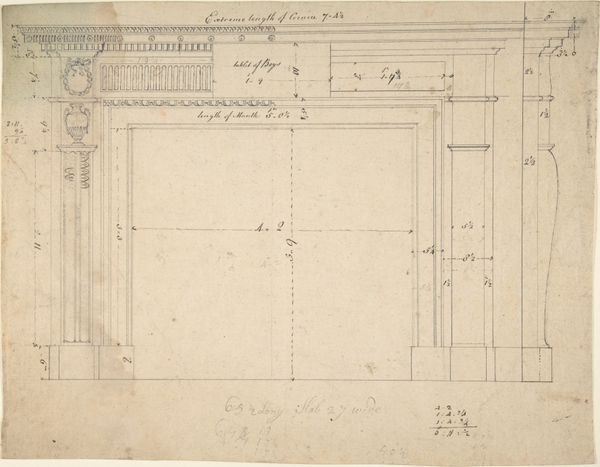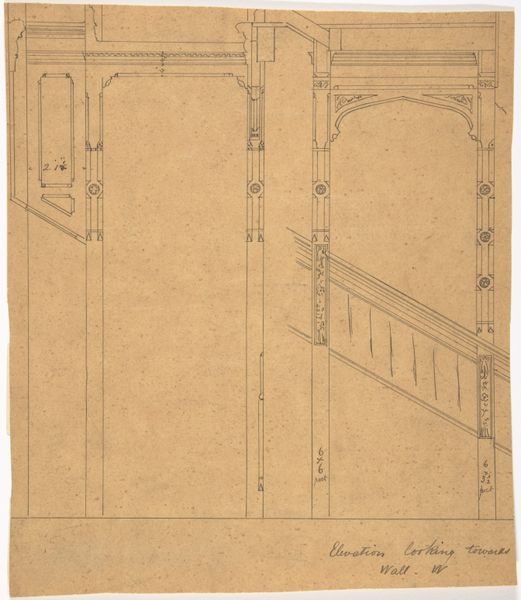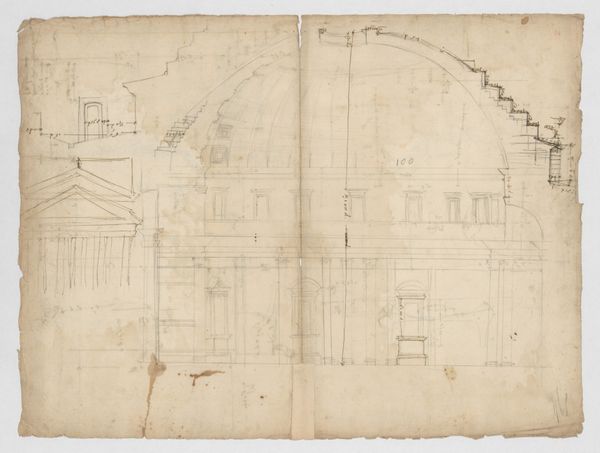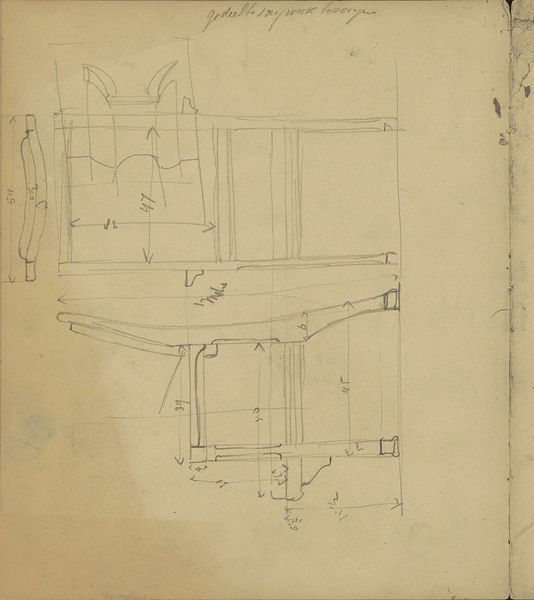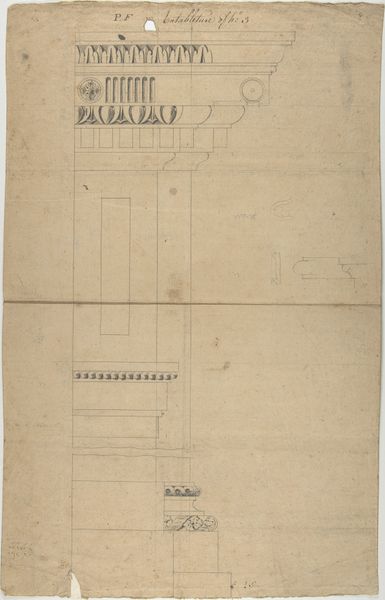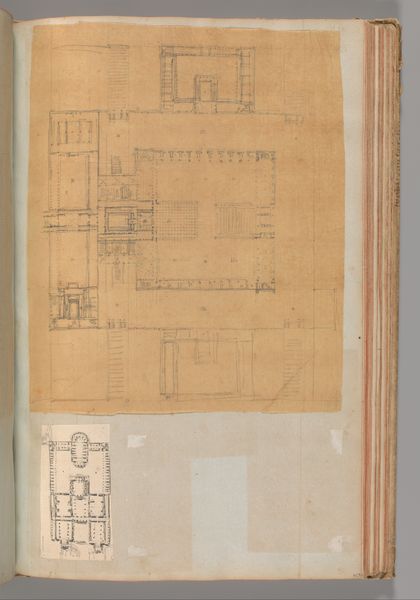
Pantheon, pediment details (recto) Pantheon, pilaster capital profile and projected elevation, column diagram, bronze door detail (verso) 1500 - 1560
0:00
0:00
drawing, print, paper, engraving, architecture
#
drawing
# print
#
paper
#
11_renaissance
#
italian-renaissance
#
engraving
#
architecture
Dimensions: sheet: 16 5/8 x 11 13/16 in. (42.3 x 30 cm)
Copyright: Public Domain
Editor: Here we have an architectural study from the Italian Renaissance, around 1530, titled "Pantheon, pediment details" by an anonymous artist. It's a drawing, or perhaps an engraving, on paper showing precise measurements. I find the artist's dedication to detail compelling, but also kind of removed from the actual lived experience of the building. What do you make of it? Curator: I see a careful attempt to codify power. Consider the Pantheon itself: built by emperors, later consecrated as a church, an enduring symbol of authority. This drawing, through its meticulousness, participates in that power structure. It’s not just about accurate representation, it’s about control through knowledge. How might its circulation amongst elite circles reinforce social hierarchies? Editor: That’s a really interesting point. I was so focused on the drawing's technical skill, I hadn't thought about how that skill itself could be a form of asserting dominance. It makes me wonder, who was this knowledge meant for? Curator: Precisely. Access to architectural knowledge, like this rendering, was not democratized. Think about the master builders of the time, many of whom were not afforded such detailed documentation, their knowledge transmitted orally, through craft, and thus less easily controlled by elite institutions. Isn’t it suggestive to observe this architectural language developing alongside, even solidifying, evolving class divisions? Editor: So, it's almost like this drawing represents a shift from a more communal, craft-based approach to building, towards something more academic and exclusive? Curator: Exactly! It's a material representation of intellectual property, a visualization of codified power dynamics inherent in architectural practices that persist even today. Editor: Wow, I never thought of it that way. Thanks for illuminating the political context embedded in this seemingly straightforward architectural drawing. I’ll definitely look at these images with a fresh, critical perspective now. Curator: It’s all about engaging in an intersectional dialogue; looking beyond the surface, tracing power dynamics embedded within form and technique.
Comments
No comments
Be the first to comment and join the conversation on the ultimate creative platform.
